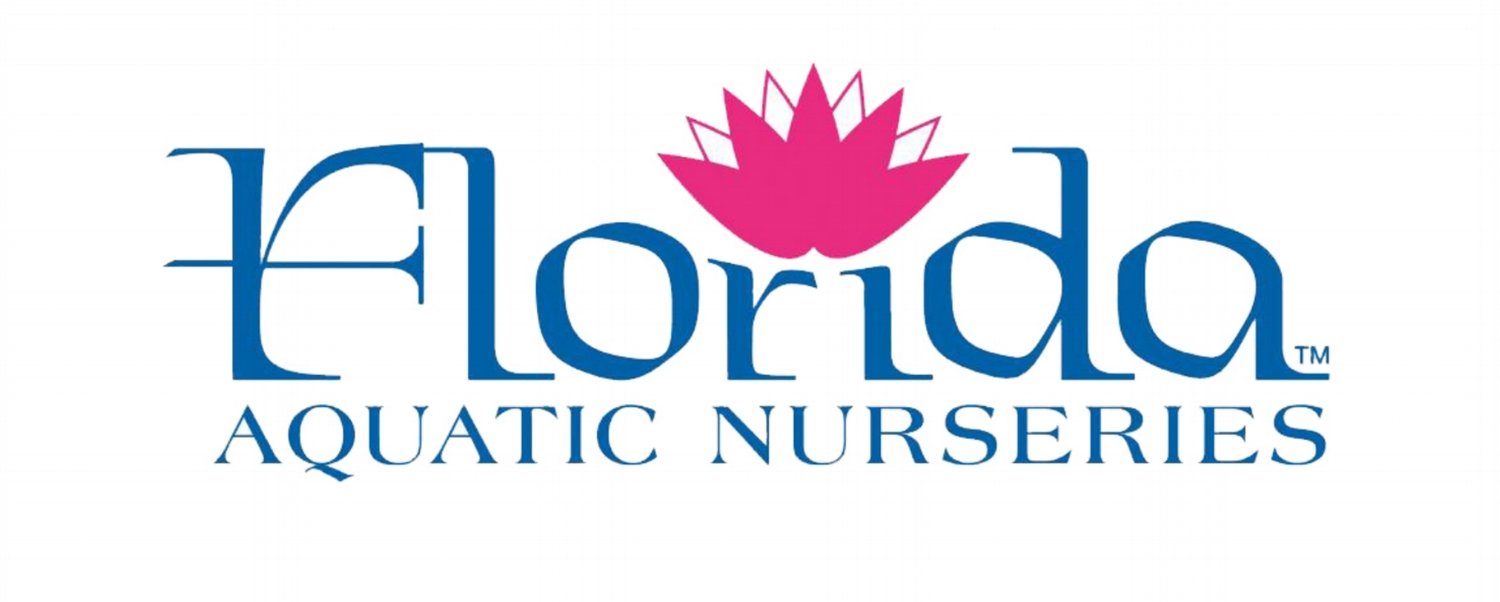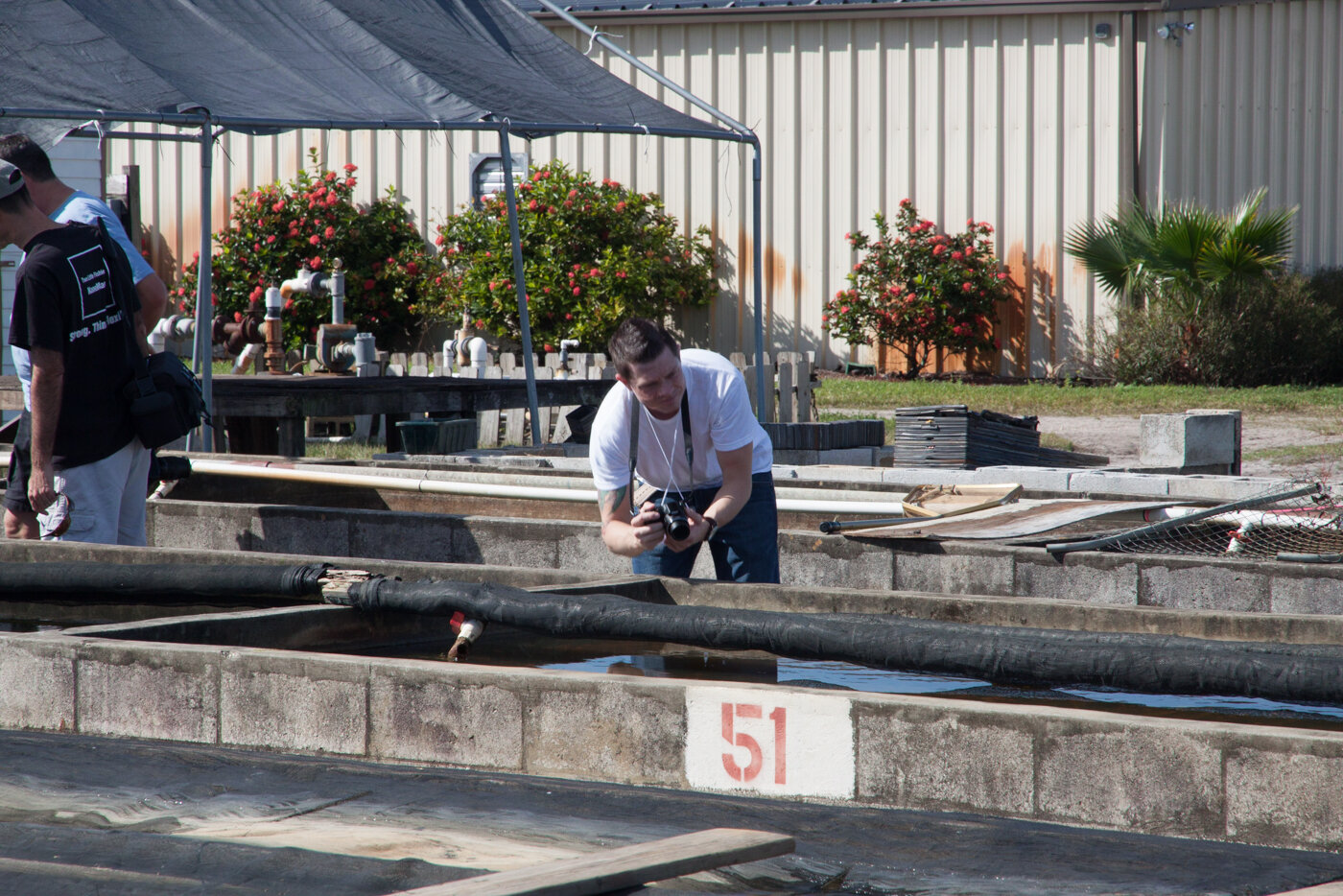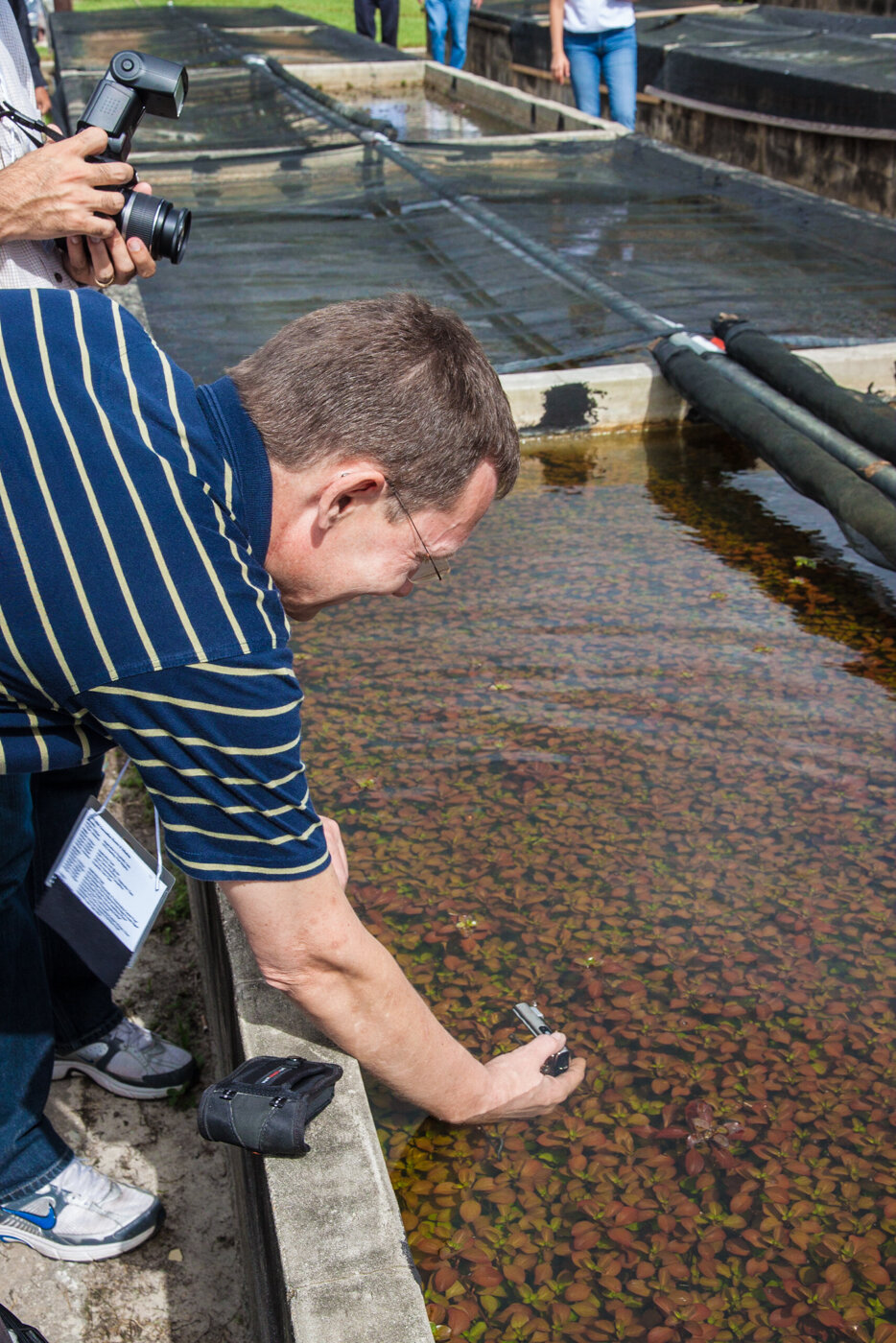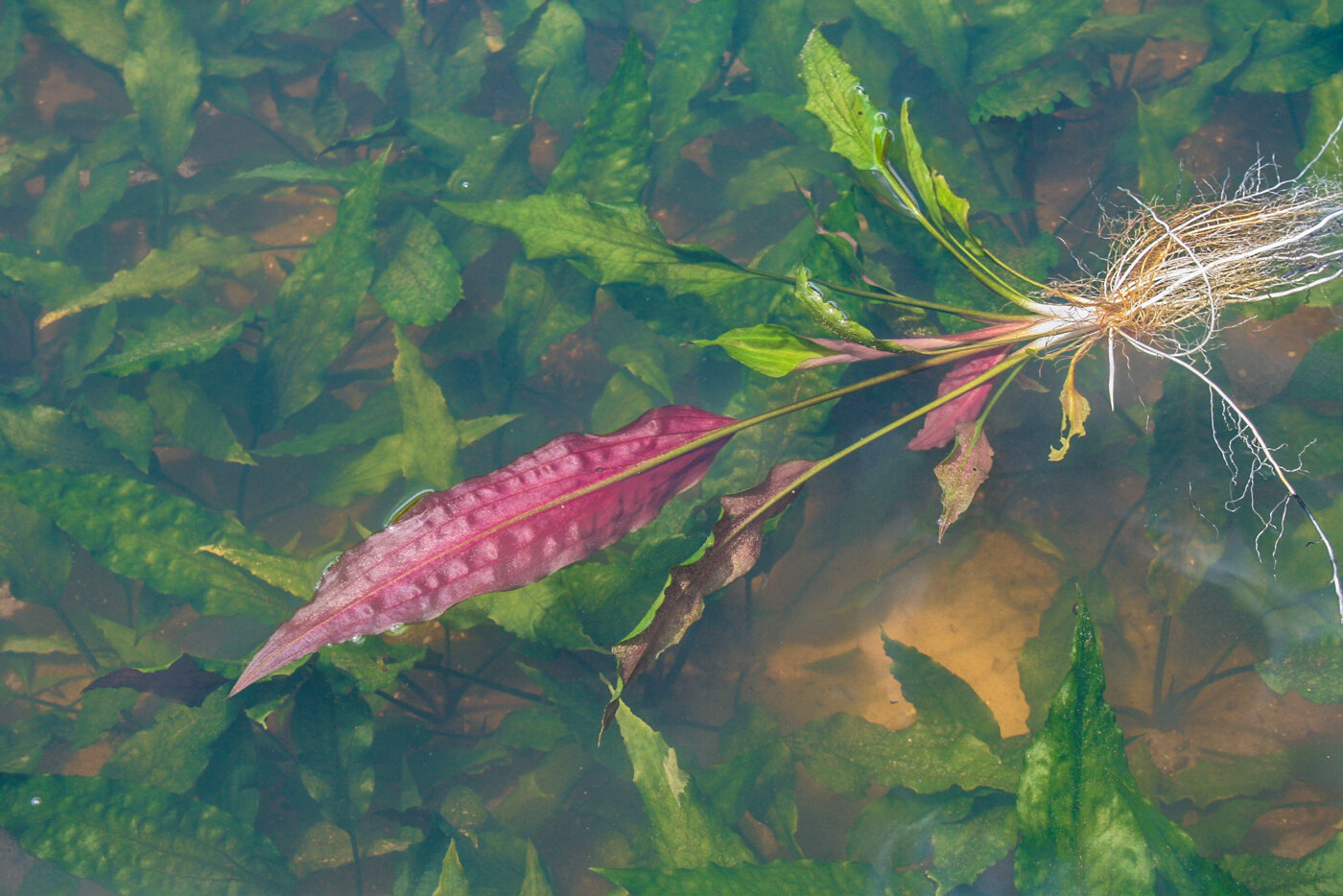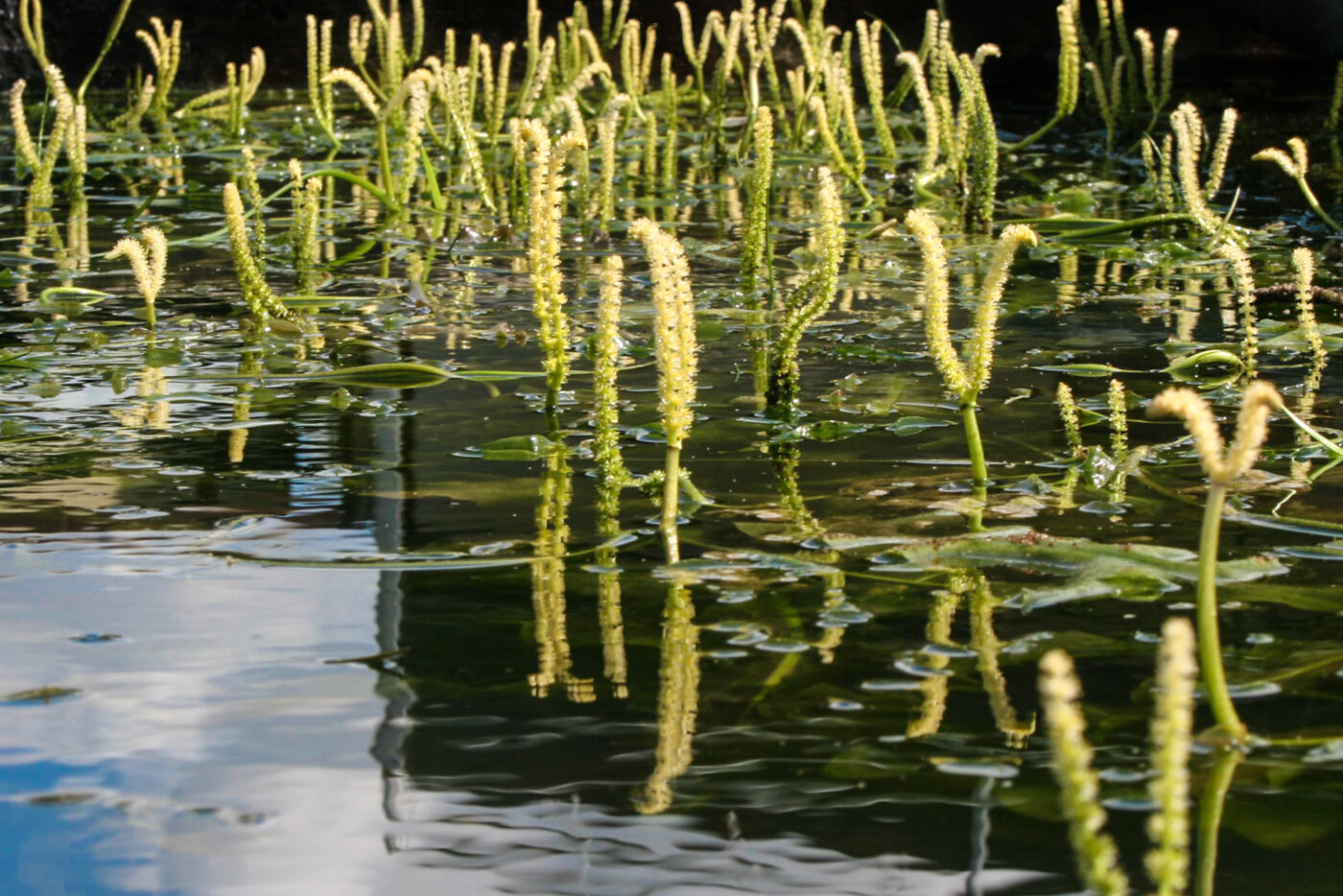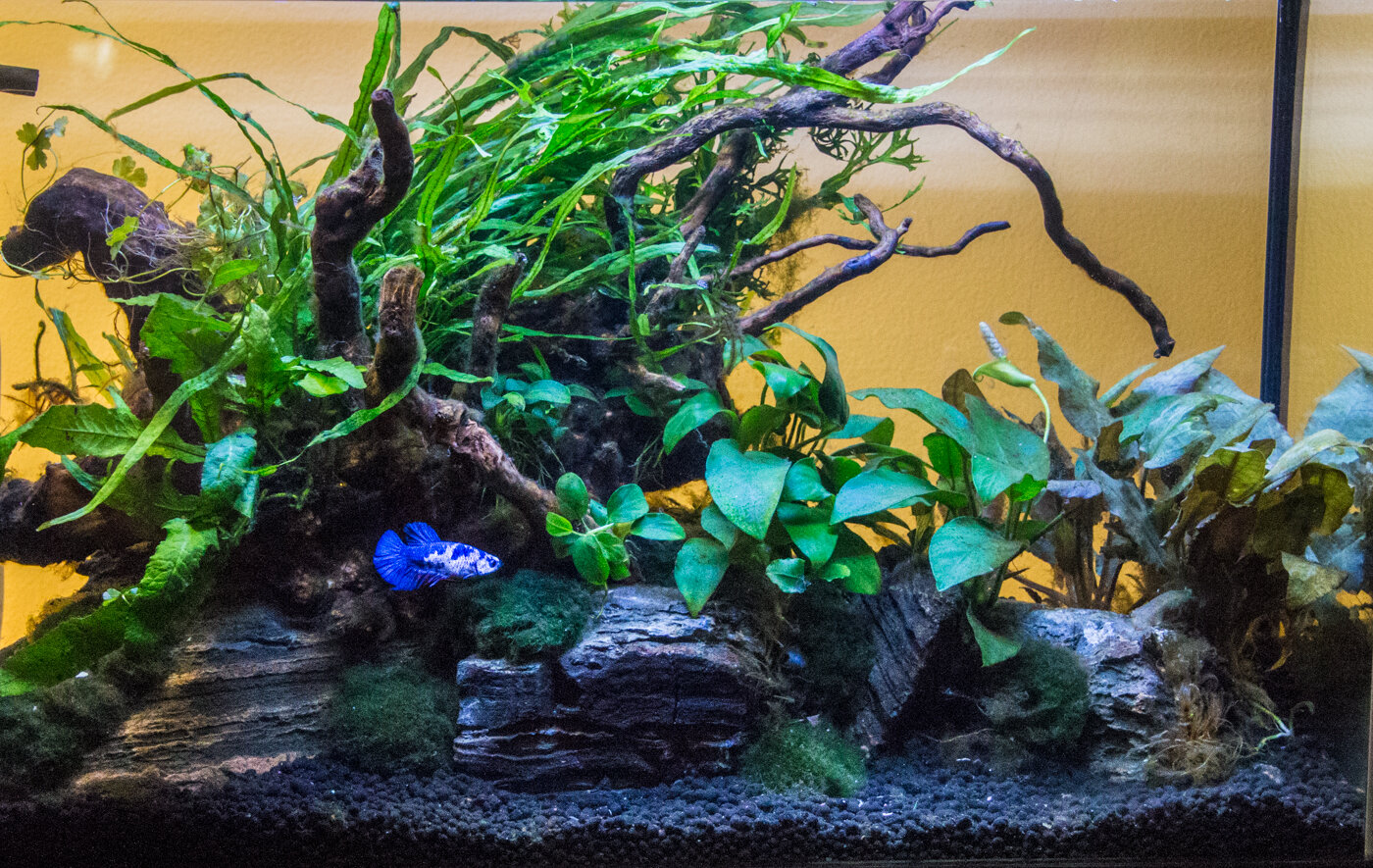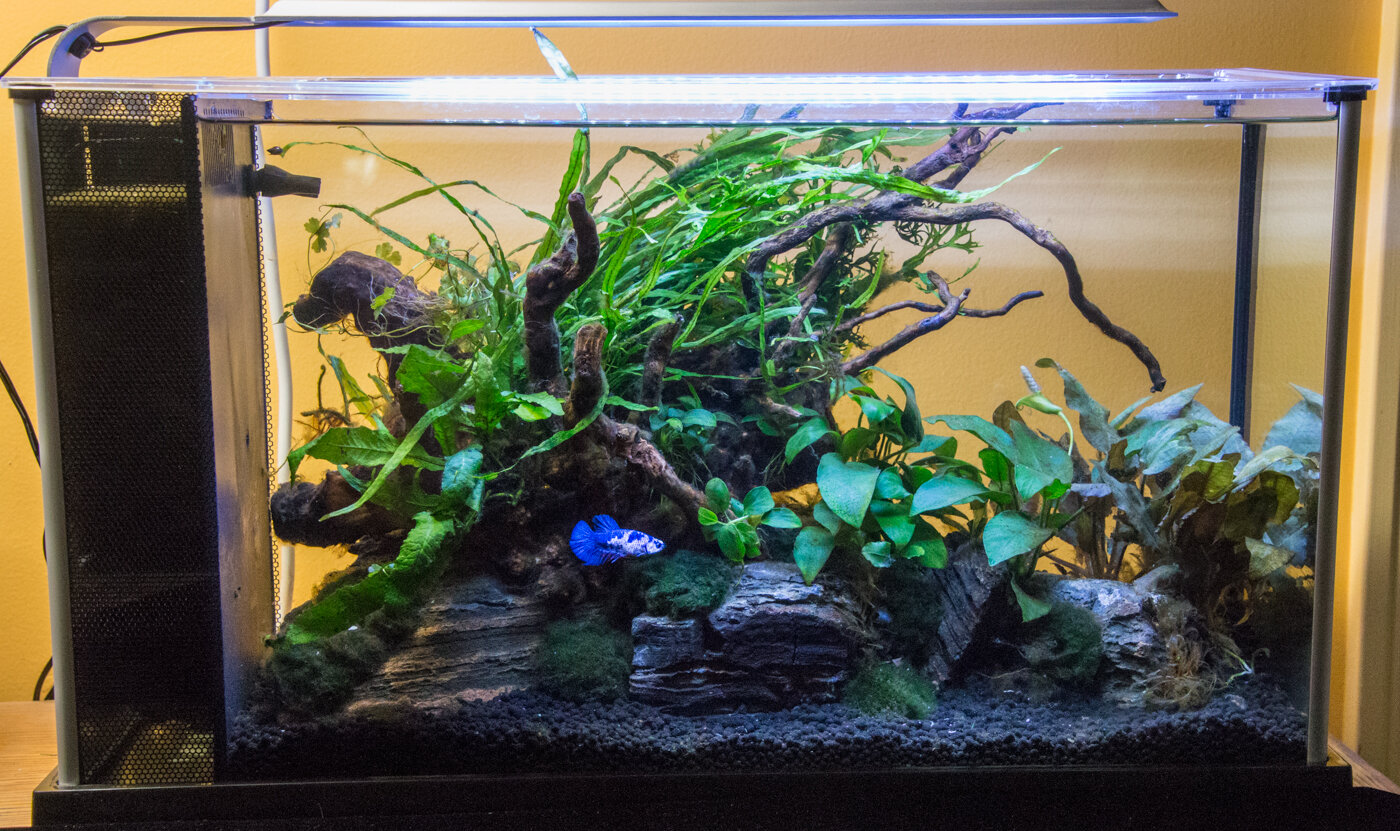Bettas may survive just fine in those little cups at the pet store for a week or so, as they wait for you to bring them home, but they actually have all the same needs as any other fish for a long, healthy life. The wild ancestors of our domestic Bettas come from densely vegetated, quiet bodies of water. You can create a beautiful, small garden-home for your Betta, and have, not only a gorgeous slice of nature to sit on your desk, but also a home for your Betta that will keep him health, happy, and displaying at his best for you. And it’s not even hard! First tip, however… Don’t buy your Betta yet! Get his new home all set up for him FIRST and give it some time to settle in before bringing your new pet home.
You can find everything you need at your pet store or on line. The easiest way to a healthy Betta home, is to start with an “all in one” aquarium. I chose the Fluval Spec V. This is a 5 gallon tank. While you could get away with a slightly smaller tank, a 5 gallon tank is large enough to be pretty stable, and gives you some room for a pretty “aquascape” (the common term for a pretty garden style aquarium) The nice thing about these all-in-one tank systems is that you get the tank, light, and filtration system all combined. I like this particular tank because all the equipment is hidden in the end panel. There is no unsightly equipment showing inside the tank.
Bettas are warm water fish, even by tropical fish standards, and really need a heater in their tank unless your home is uncommonly warm. There is room in the Fluval Spec to put a small, submersible, adjustable, thermostatically controlled heater in the space behind the dark panel. If you choose a tank that doesn’t give you this option, you can also hide a submersible heater by placing it horizontally, across the back of the tank. Set the temperature of your heater to between 75° and 80° F.
You will also need some “hardscape” materials (rocks and or wood) to decorate your tank. Most independent aquarium stores carry a good selection of hardscape materials these days.
The big box stores may have some, or you may have to venture further afield. Please patronize your good independent store if you have one. If not, there are lots of online sources of hardscape materials.
Last, you will need substrate for your tank. Plants need nutrition, just like your fish do, and the easiest way to provide this is with a commercial, soil based substrate. I have used Fluval Stratum in this tank, but there are other good options too. Be aware that there are a number of commercial “planted tank substrates” available that do not provide any nutrition for your plants. You can use these, but you will need to feed your plants from the very beginning, while in a nutrient rich soil based substrate, the plants can find their own nourishment for quite a while. You should avoid “fish tank gravel”, because it not only contains no nutrition, but it is also hard for the plants to grab with their roots.
One problem with these little tanks is that the light included is not very bright. For this reason, it is important to choose plants that will grow in fairly dim light conditions. But that’s OK! As long as you choose wisely, these shade tolerant aquatic plants will also grow more slowly, meaning you won’t have to trim your tiny tank too often! I chose the following plants, all available from Florida Aquatic Nurseries. You may be able to buy these right off the rack or out of the tanks at your pet store, but if not, ask them to order them for you. It is much better to have all the plants you need when you set up your tank rather than trying to add them piecemeal later. I have included the scientific names of these plants as well as the common names (where there is one) to avoid confusion. Lots of beginners prefer common names, but in the world of aquatic plants, often there aren’t common names, and sometimes common names are used for more than one, (sometimes quite different) plant. All of that can lead to confusion.
Java Fern (Microsorum pteropus)
Narrow leafed
‘Windelov’
Normal leafed
Cryptocoryne wendtii ‘Bronze’
“Moss Balls” (Aegagropila linnaei)
Bucephalandra “Green Wav
Anubias barteri Var. ‘Nana’
Anubias barteri Var. ‘Nana’ Petite
Hydrocotyle cf. tripartita
I chose these particular plants because they will all grow nicely in a “low tech” tank (low to moderate light without supplemental CO2) , and although they will eventually need trimming, none will get too large for a small tank.
Once you have all your plants and equipment it is time to get going! With a small tank like this, I find it convenient to set it up on my kitchen counter, where I can get as messy as I want. This size tank is light enough to be picked up and moved easily once it is set up, but before you fill it with water. With a tank much bigger than 5-7 gallons, you will want to set it up in its permanent position, on a sturdy surface designed to hold weight. Remember, water is heavy. It weighs over 8 lbs. per gallon. That means that a little 5 gallon tank weighs over 40 lbs. once filled. A ten gallon tank weighs over 80! A 5-7 gallon tank is fine on the corner of most desks. A ten gallon tank will be safer on a dedicated aquarium stand unless you are certain the piece of furniture you plan to use is up to the task.
First pour your substrate into the tank. You do not need to rinse commercial aquatic plant substrates as long as you fill the tank carefully. We’ll talk about that later! Your substrate will look best if it is quite shallow and straight along the front edge, but you want more depth in the back so that plants can root. For this tank, I chose Fluval Stratum, which is soil based and perfect for growing aquatic plants that root in the substrate. You could also choose an inert substrate like Eco-Complete or Seachem Flourite. That type of substrate gives plants a good place to anchor their roots, but provides them with no nutrition. So it puts a little more responsibility on you in terms of their care. The cost of both types of substrate is similar, which is why I suggest Stratum, which will nourish your plants.
For this tank, I have chosen “pagoda stone” a rock commonly available at aquarium shops. Whatever stone you decide to use, stick to just one type in any particular tank. It will look much more natural. The wood I chose was a nice, branchy piece of “spider wood”, again a type of wood that is widely available through aquarium stores. Try to avoid having sawed off edges show. However, these tanks are narrow from back to front, and you may find that you need to trim your wood to fit. Just make sure that the cuts are in the back where they don’t show.
Also make sure that there is enough space all around your hardscape to be able to clean. You may not be able to fit your hand, but you need to at least be able to get a scraper through to clean the glass.
